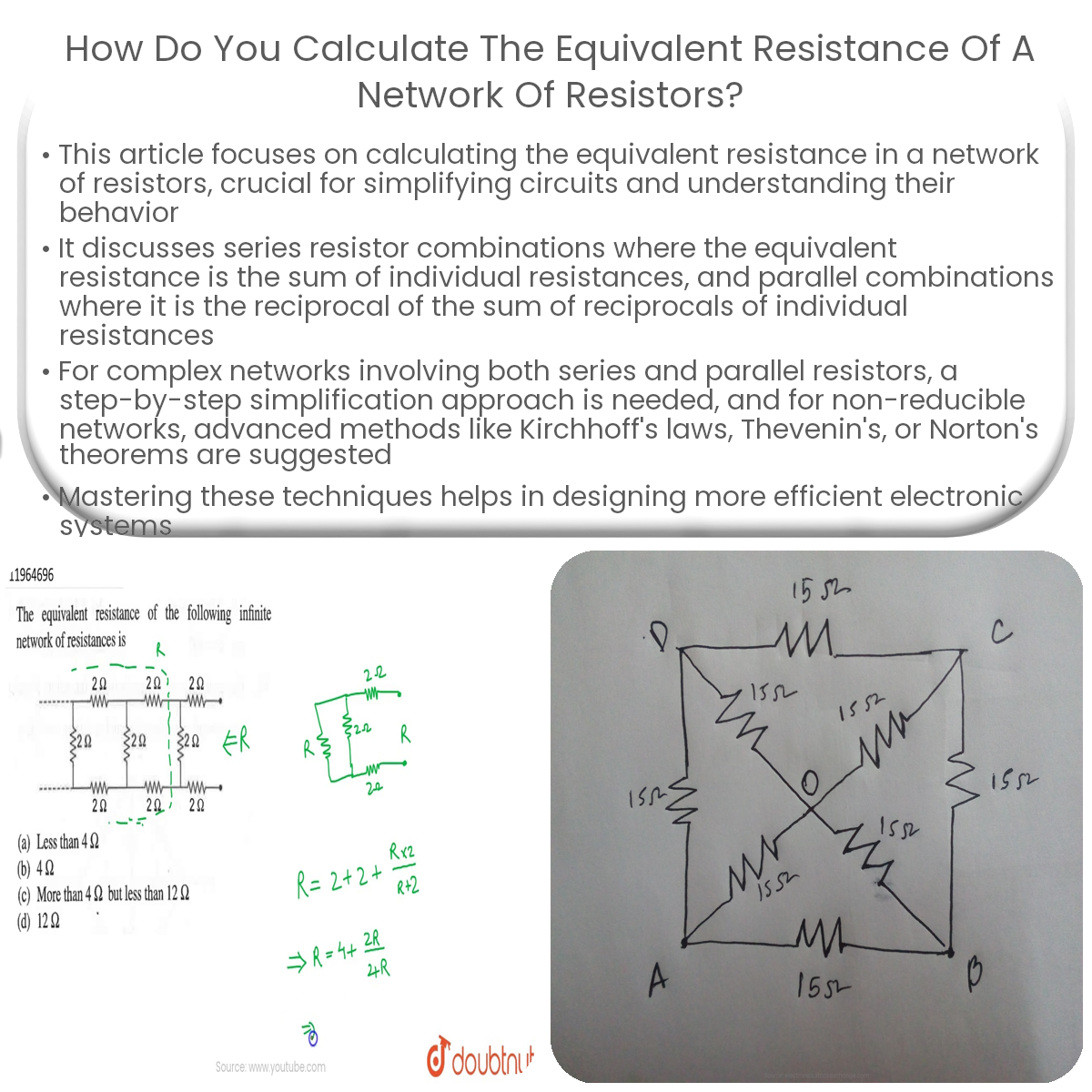To calculate equivalent resistance, identify series and parallel combinations, then use respective formulas and simplify the network step by step.
Calculating the Equivalent Resistance of a Network of Resistors
When analyzing a network of resistors, it’s crucial to calculate the equivalent resistance to simplify the circuit and better understand its behavior. This article explains how to calculate the equivalent resistance for series and parallel resistor combinations, as well as complex networks.
Series Resistor Combination
In a series configuration, resistors are connected end-to-end, and the current flows through each resistor sequentially. The equivalent resistance (Req) is simply the sum of individual resistances:
- Req = R1 + R2 + … + Rn
Parallel Resistor Combination
When resistors are connected in parallel, the current divides among them, and their ends are connected together. The equivalent resistance is calculated using the following formula:
- 1 / Req = 1 / R1 + 1 / R2 + … + 1 / Rn
To find Req, simply take the reciprocal of the sum of the reciprocals of individual resistances.
Complex Resistor Networks
For complex networks containing both series and parallel resistor combinations, a step-by-step approach is required:
- Identify and simplify any series or parallel resistor combinations within the network.
- Replace each combination with its equivalent resistance.
- Repeat steps 1 and 2 until the entire network is reduced to a single equivalent resistance.
For more complex networks that cannot be reduced using series and parallel rules, advanced techniques such as Kirchhoff’s voltage and current laws, Thevenin’s theorem, or Norton’s theorem can be employed.
Conclusion
Calculating the equivalent resistance of a network of resistors is a fundamental skill in analyzing electronic circuits. By simplifying series and parallel resistor combinations, as well as employing advanced techniques for complex networks, you can better understand the behavior of a circuit and design more efficient systems.


